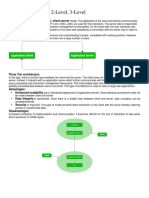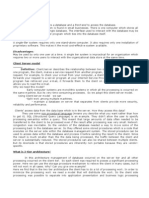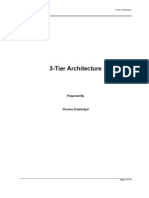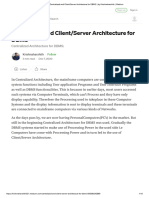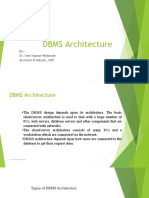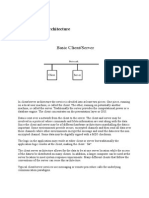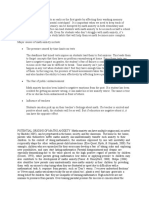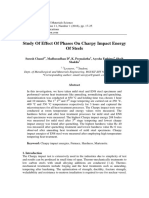0% found this document useful (0 votes)
2 views7 pagesDbms Architecture
The document discusses centralized and client-server architectures for database management systems (DBMS). Centralized systems rely on a single server for all operations, making them easy to manage but vulnerable to failures and scalability issues. Client-server architectures, including 2-tier and 3-tier models, enhance scalability and fault tolerance by separating user interfaces and application processing from data storage.
Uploaded by
swastik.hp03Copyright
© © All Rights Reserved
We take content rights seriously. If you suspect this is your content, claim it here.
Available Formats
Download as DOCX, PDF, TXT or read online on Scribd
0% found this document useful (0 votes)
2 views7 pagesDbms Architecture
The document discusses centralized and client-server architectures for database management systems (DBMS). Centralized systems rely on a single server for all operations, making them easy to manage but vulnerable to failures and scalability issues. Client-server architectures, including 2-tier and 3-tier models, enhance scalability and fault tolerance by separating user interfaces and application processing from data storage.
Uploaded by
swastik.hp03Copyright
© © All Rights Reserved
We take content rights seriously. If you suspect this is your content, claim it here.
Available Formats
Download as DOCX, PDF, TXT or read online on Scribd
/ 7














